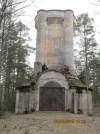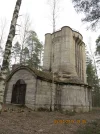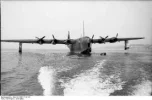Bodyguard
Kenraali
Juurikin näin. Liberty-luokan rahtilaivat olivat ensimmäiset laivat, jotka rakennettiin lohkoista. Ei ihan samassa määrin kuin nykyään, mutta periaate oli sama. Lisäksi niitä rakentamassa oli koko joukko naisia, joita ei ennen niitä juurikaan telakoilla näkynyt. Hitsaamalla rakennetut laivat valmistuivat nopeammin kuin perinteisesti niittaamalla tehdyt. Britit epäilivätkin monissa Liberty aluksissa syntyneiden murtumien johtuneen juurikin tuosta hitasauksesta ( hitsisauma ei pysäytä murtumaa toisin kuin niitattu rakenne ). Tosiasiassa nuo murtumat syntyivät todennäköisesti ennemminkin aluksissa käytetystä heikkolaatuisesta teräksestä. Halvalla ja nopeassti oli periaate ja noita aluksia valmistuikin parhaimmillaan jopa muutamassa kymmenessä päivässä.Liberty-laivat koottiin hitsaamalla eri tehtaissa tuotetut esivalmistetut lohkot telakalla yhteen. Menetelmä on muokattuna edelleen käytössä, mm. risteilyalksia rakennetaan Suomessa lohkoista ja hyttimoduuleista. Strategiana oli tuottaa standardistoituja rahtilaivoja nopeammin, kuin U-veneet kykenivät niitä upottamaan ja näin turvata materiaalin virta Britanniaan. Liberty-aluksia käytettiin luonnollisesti kaikilla merinäyttämöillä ja sodan jälkeen niitä ostettiin jokunen myös Suomeen.
Mm. Aristoteles Onassis osti sodan jälkeen muutamia Liberty aluksia...
Nyt on kaksi henkilöä, jotka tiesivät, Ikarus tuon laivatyypin ja Samovarius taas tuon lohko-/modulirakentamisen. Nopeampi heistä jatkakoon.




